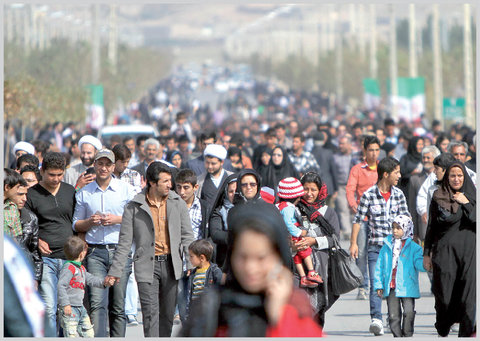Iran (IMNA) - The main premise of the human development approach is that expanding peoples’ freedoms is both the main aim and the principal means for sustainable development. If inequalities in human development persist and grow, the aspirations of the 2030 Agenda for Sustainable Development will remain unfulfilled. But there are no pre-ordained paths. Gaps are narrowing in key dimensions of human development, while others are only now emerging.
Inequalities in human development hurt societies and weaken social cohesion and people’s trust in government, institutions and each other. They hurt economies and are a defining bottleneck in achieving the 2030 Agenda for Sustainable Development.
Inequalities in human development are not just about disparities in income and wealth. The 2019 Human Development Report (HDR) explores inequalities in human development by going beyond income, beyond averages, and beyond today.
The report is organized into seven sections, the first section presents information on the country coverage and methodology for the 2019 Human Development Report. The next five sections provide information about key composite indices of human development: the Human Development Index (HDI), the Inequality-adjusted Human Development Index (IHDI), the Gender Development Index (GDI), the Gender Inequality Index (GII), and the Multidimensional Poverty Index (MPI).
The final section covers five dashboards: quality of human development, life-course gender gap, women’s empowerment, environmental sustainability, and socioeconomic sustainability.
Iran in high human development category
The HDI is a summary measure for assessing long-term progress in three basic dimensions of human development: a long and healthy life, access to knowledge and a decent standard of living.
Long and healthy life is measured by life expectancy. The knowledge level is measured by mean years of schooling among the adult population, which is the average number of years of schooling received in a life-time by people aged 25 years and older; and access to learning and knowledge by expected years of schooling for children of school-entry age.
Iran’s HDI value for 2018 is 0.797, which put the country in the high human development category; positioning it at 65 out of 189 countries and territories.
Between 1990 and 2018, Iran's HDI value increased from 0.577 to 0.797, demonstrating growth of 38.3 percent.
During the aforementioned period, Iran’s life expectancy at birth increased by 12.6 years, mean years of schooling increased by 5.8 years and expected years of schooling increased by 5.5 years.
Moreover, Iran’s Gross National Income per capita increased by about 59.5 percent between 1990 and 2018.
11.5% loss due to inequality in HDI distribution
The HDI is an average measure of basic human development achievements in a country. Like all averages, the HDI masks inequality in the distribution of human development across the population at the country level. The IHDI takes into account inequality in all three dimensions of the HDI by ‘discounting’ each dimension’s average value.
Iran’s HDI for 2018 is 0.797. However, when the value is discounted for inequality, the HDI falls to 0.706, a loss of 11.5 percent due to inequality in the distribution of the HDI dimension indices.
0.874 inequality in favour of men or women HDI
The Gender Development Index (GDI) is based on the sex-disaggregated Human Development Index, defined as a ratio of the female to the male HDI. The GDI measures gender inequalities in achievement in three basic dimensions of human development: health, education and command over economic resources. This means that the grouping takes into consideration inequality in favour of men or women equally.
The 2018 female HDI value for Iran is 0.727 in contrast with 0.832 for males, resulting in a GDI value of 0.874.
HDI gender-based inequalities
The Gender Inequality Index (GII) reflects gender-based inequalities in three dimensions of HDI. Reproductive health is measured by maternal mortality and adolescent birth rates; empowerment is measured by the share of parliamentary seats held by women and attainment in secondary and higher education by each gender, and economic activity is measured by the labour market participation rate for women and men.
The GII can be interpreted as the loss in human development due to inequality between female and male achievements in the three GII dimensions.
Iran has a GII value of 0.492, ranking it 118 out of 162 countries in the 2018 index. In Iran, 5.9 percent of parliamentary seats are held by women, and 67.4 percent of adult women have reached at least a secondary level of education compared to 72.0 percent of their male counterparts.
For every 100,000 live births, 25.0 women die from pregnancy-related causes; and the adolescent birth rate is 40.6 births per 1,000 women of ages 15-19. Female participation in the labour market is 16.8 percent compared to 71.2 for men.
Tehrantimes


Your Comment